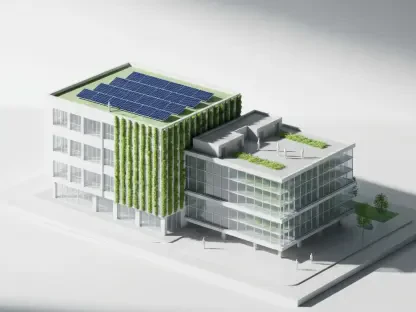As Invermere faces mounting pressure from a rapidly increasing population, the urgency to address its housing needs has become more pronounced. Historical data reveals a population expansion of more than 30 percent over the past decade, resulting in significant housing shortages. The District of Invermere’s interim housing needs report underscores this demand, indicating a necessity for at least 190 new homes by 2026 and forecasting an even more substantial requirement of 720 homes by 2041. Simultaneously, the demographic shift towards an aging population has magnified the demand for senior housing, with seniors now comprising 24 percent of the community. This demographic trajectory mandates a strategic approach to meet diverse housing requirements, ranging from affordable rentals and ownership to market rentals and employment housing, while considering the influence of short-term rentals and the need for proximity to public transit.
Challenges and Gaps in Current Housing Provision
Despite the approval of permits for over 190 housing units since the beginning of 2025, questions remain regarding the effectiveness of these measures in filling the identified gaps. The demand for housing that caters to specific community needs, particularly for seniors and low-income families, has not been fully addressed. Market rental shortages continue to plague the area, complicating the efforts to provide affordable living options. A critical aspect of this challenge is the interplay between short-term rental markets and long-term housing availability. Short-term rental platforms have siphoned off potential long-term housing units, exacerbating scarcity and driving up prices for local residents. Planners like Rory Hromadnik emphasize the necessity for targeted solutions, encouraging community engagement and feedback through initiatives like public surveys. The forthcoming survey represents a pivotal opportunity for residents to voice their concerns and suggestions, potentially steering minor yet significant amendments to the official community plan (OCP).
A major concern for Invermere is the provision of housing near accessible public transit. This factor is essential in reducing transportation costs and increasing sustainability in everyday life. Moreover, housing for lower-income families or individuals employed in essential services remains critical. The local economy depends significantly on individuals working in sectors such as healthcare, education, and tourism, where wages often do not align with the prevailing housing market prices. As a result, creating housing solutions that are both affordable and conveniently located relative to employment centers is vital. The ongoing engagement process for revising the OCP reflects an awareness of these needs, calling for informed participation to shape future strategies. Allowing community members to partake in decision-making processes can ensure that housing strategies align with lived realities, balancing economic growth with social responsibility.
Proposed Solutions and Community Involvement
As Invermere advances towards implementing effective solutions, the district is contemplating several strategic initiatives to accommodate diverse housing needs. Central to these proposed solutions is the notion of introducing zoning flexibility. By allowing more mixed-use developments and increasing housing densities, it is believed that a wider range of housing options can emerge. Such strategies may not only provide immediate relief to the acute housing shortages but also promote a more efficient use of available land resources. Another promising direction is enhancing the coordination between housing projects and public transit development. By prioritizing housing in areas with robust public transportation access, the district seeks to foster sustainable growth and increase accessibility for a broader demographic range, thus facilitating community inclusivity and environmental sustainability.
Community engagement remains at the forefront of these efforts. Invermere has initiated a public survey process to encourage residents to share their perspectives and priorities regarding future housing developments. The insights gathered will inform a draft amendment to the OCP, which will undergo further public scrutiny and feedback. This transparent and participatory approach aims to harness local knowledge and ensure that policy adjustments are reflective of community needs. The upcoming deadline for survey participation underscores the importance of timely and active citizen involvement, providing a tangible mechanism through which residents can influence policy directions. As the district prepares to release a proposed amendment, the community’s role becomes ever more crucial in shaping a sustainable and inclusive housing landscape.
Future Considerations and Strategic Outlook
While permits for over 190 housing units have been approved since early 2025, doubts persist about their effectiveness in bridging existing housing gaps. The area still struggles to meet the specific housing needs of seniors and low-income families. Ongoing rental shortages further complicate the quest for affordable living options. Crucial to this issue is the impact of short-term rental platforms, which have diverted potential long-term housing units, worsening scarcity and driving up prices. Urban planners like Rory Hromadnik stress the need for targeted strategies and advocate for community input, including through public surveys.
A significant concern is the availability of housing near public transit, critical for reducing transportation costs and enhancing daily life sustainability. Furthermore, affordable housing for low-wage workers in key sectors—healthcare, education, and tourism—remains vital, as their salaries often do not match local housing costs. The ongoing community engagement process for updating the official community plan underscores the importance of aligning housing strategies with reality, emphasizing economic growth alongside social responsibility.









